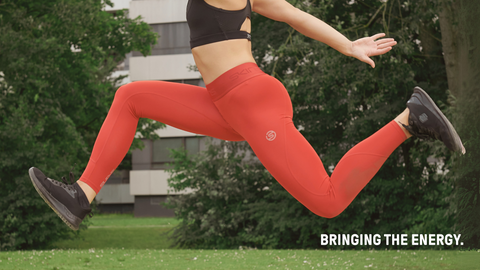SKINS Head Running Coach talks about training volume.
Understanding the plan behind the plan is essential when following a training schedule set out by a coach. Why is your coach setting you certain sessions? Why is the plan scheduled to increase and then decrease? Why are there different sessions and speeds on the plan?
TRAINING VOLUME
Training volume is something every coach, sports scientist, strength and conditioning coach and athlete monitors. Training volume is the overall measure of how much you are putting through throughout each training cycle. This is measured in many different ways: distance, time, or training stress score (TSS). Distance and TSS have many merits for being used as measures of volume, but time is always the best measure for us. Distance can change your volume by what routes you chose for your runs, for example, a 20-mile week with 0ft elevation gain or 2000ft elevation gain, which was harder to complete? TSS are also difficult to calculate and understand properly. You need a lot of historical data to measure trends and be very rigid with the training you complete to use TSS effectively. TSS works very well for controlled training in the gym but not so much in the unpredictable world of running.
The best thing about using time as a measure is a minute, is a minute, and an hour, is an hour, and nothing changes that. If you complete 45mins of easy aerobic running, you will see a certain amount of adaptations from that run. Whereas, if you are using distance as your volume measure, then the adaptation amount can change depending on how fast you complete that run. Time gives you a lot of flexibility in your running too. Some days you get out on your run, and you're just not feeling good; if you're running to distance, you still have to forge out the miles relentlessly, whereas on a time measured programme, if you aren't feeling good, hold it back a bit and don't run as fast. It's still the same time on feet; it doesn't matter!
When looking at the type of training volume, you're completing, this should be dictated to you by your current fitness, your goals in running and your injury status/history. Joshua always tells his athletes that it's much better to be consistent than sporadic in your training. Consistency helps you get into a good routine with your running, stretching and strength work. It also helps to enable you to progress your training too. It also allows you to chip away at those big goals you want to achieve within your running. The best advice we can give is to start your training off by being realistic with where you are at, knowing that the training will increase as you go.
The final thing to mention on training volume is tracking how you respond to different training volumes. When you increase your volume, you need to factor in time for your body to adapt to increases. When you add new stressors or elements to your training, this puts your body into an 'overload' phase. This phase is crucial as it will help you make those gains in fitness, but you need to be careful you don't do too much too soon. Allow your body time to adapt and increase gradually!
Knowing what training volume to stay at is the golden ticket for your training. We suggest you try and keep a detailed training log - easy enough to do with an old-fashioned diary or with apps like Strava or TrainingPeaks. This way, you can track your volume when you are doing well and in times of hardship. From this, you can spot patterns in your running and plan more effectively. Remember, you can always add a little more if needed, but doing too much will cause you some expensive physio treatment and, even worse, probably some time off running too!






